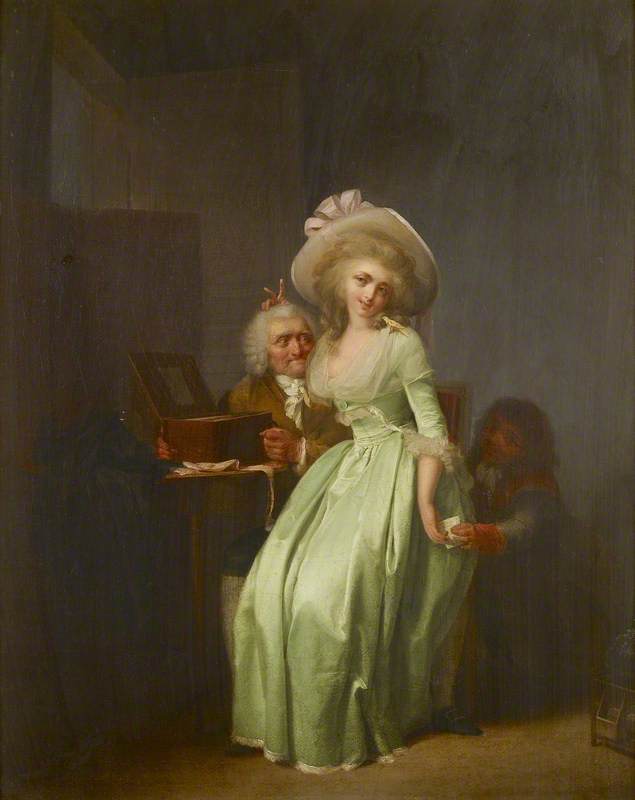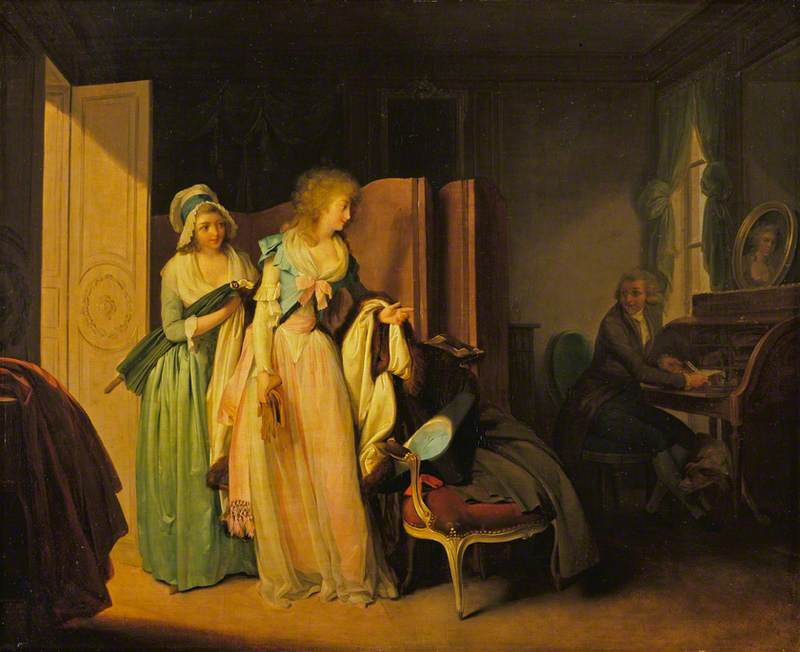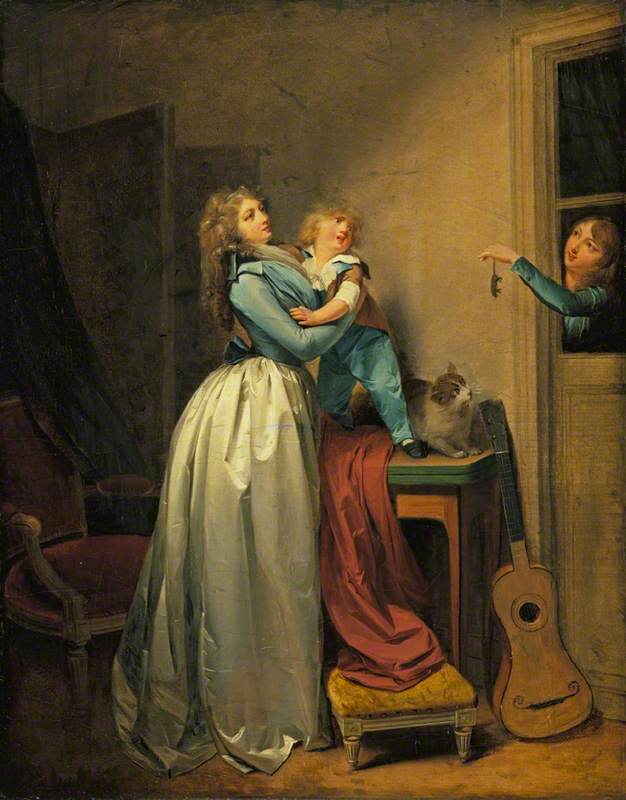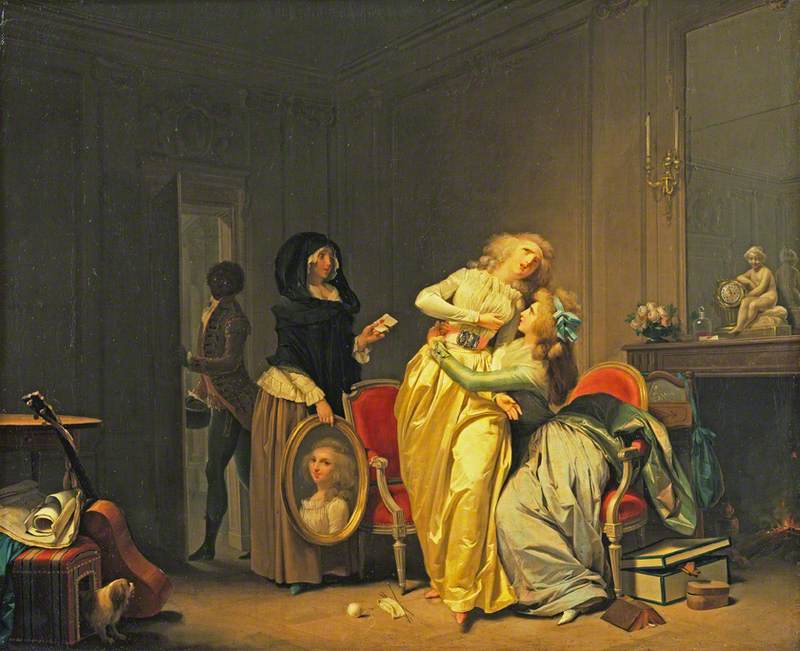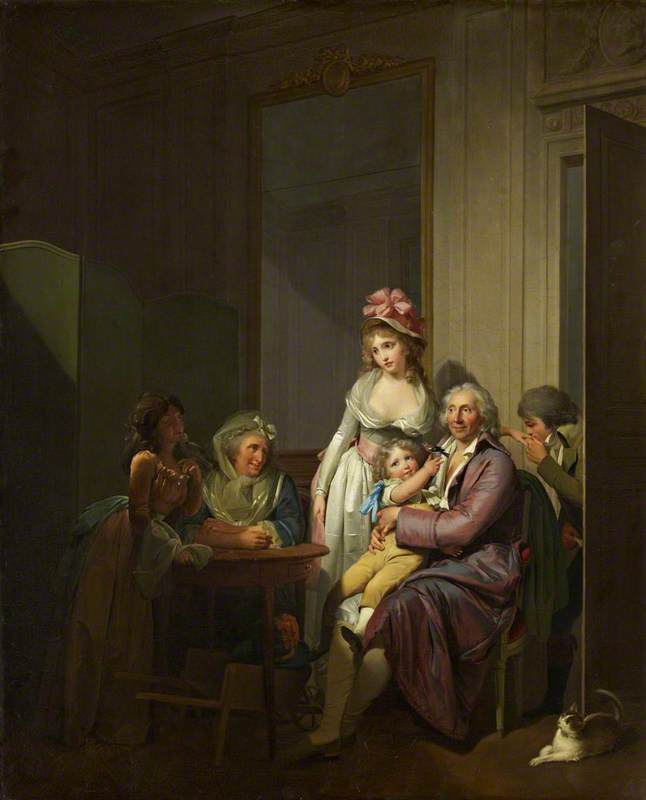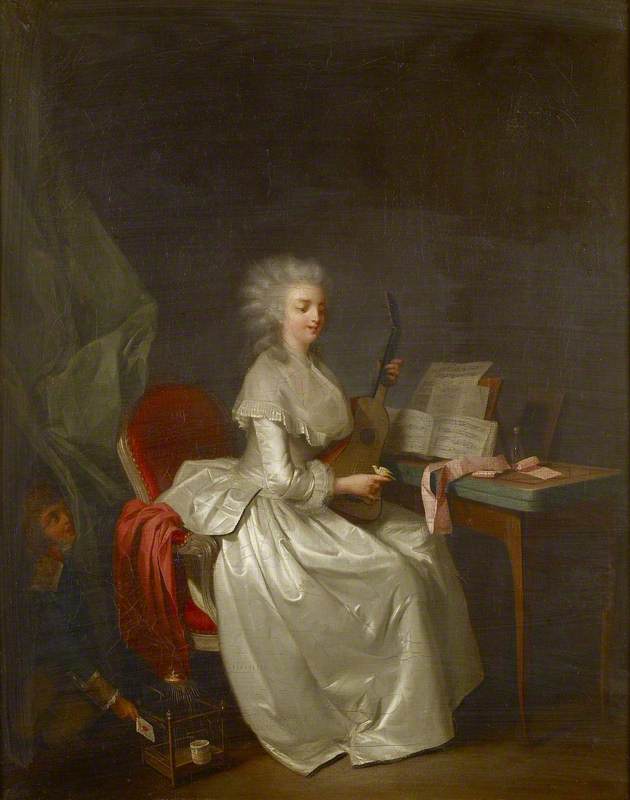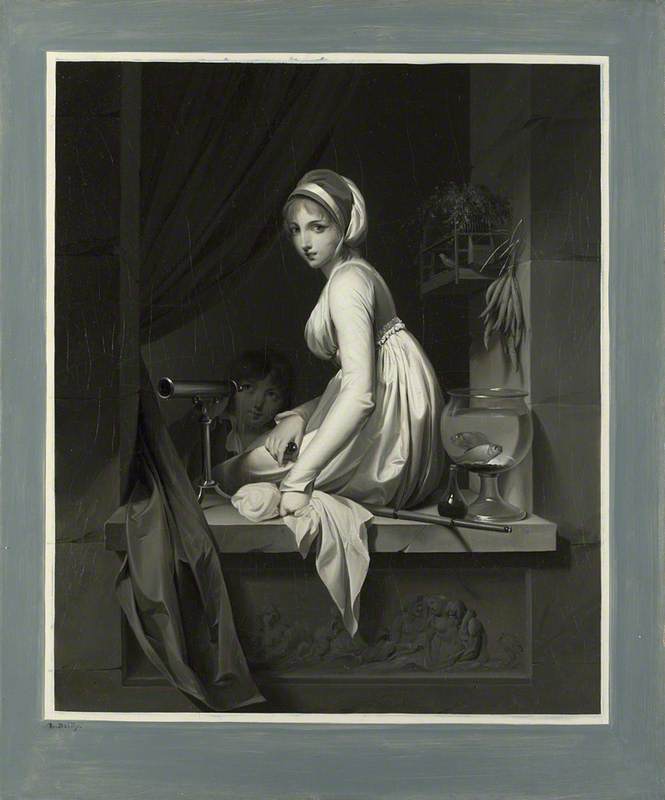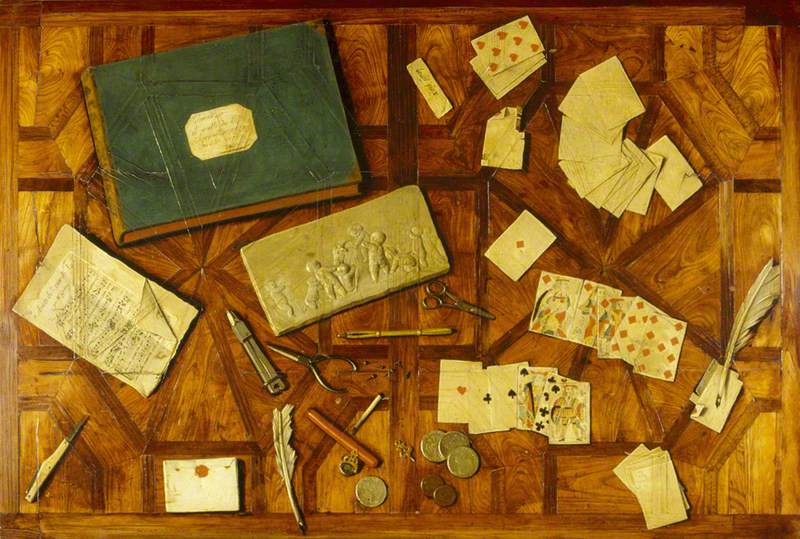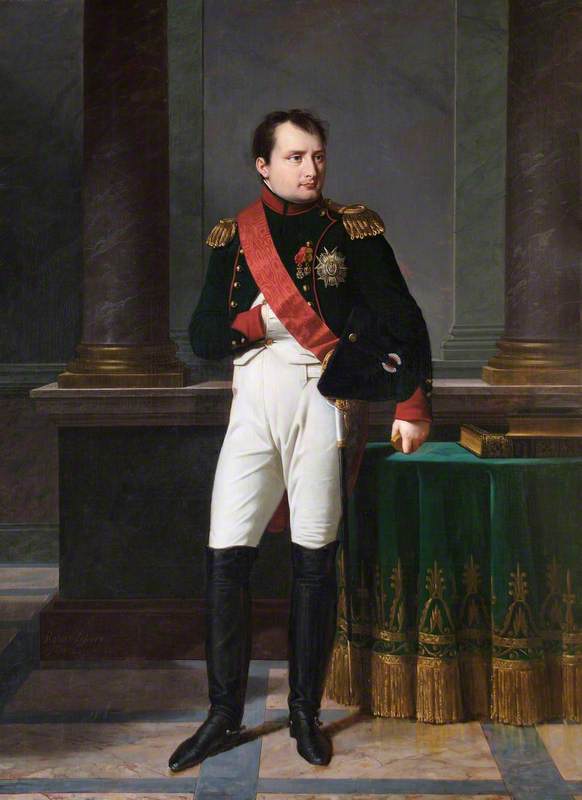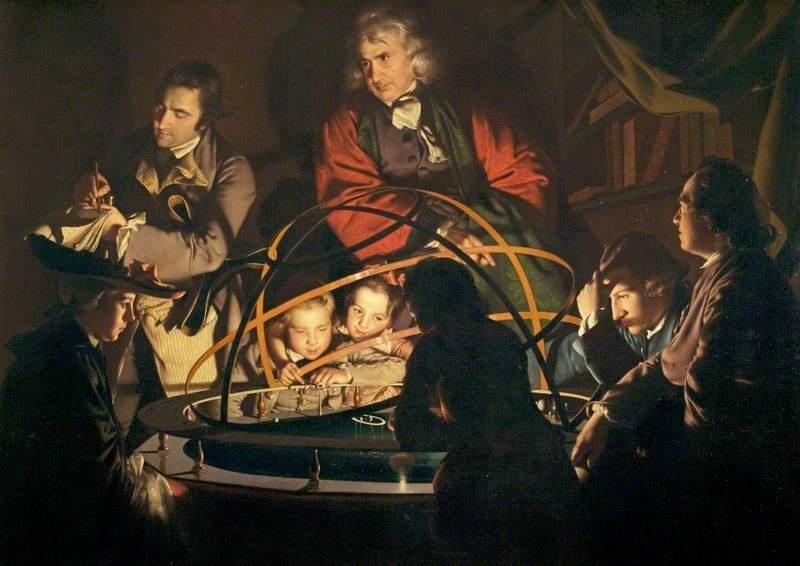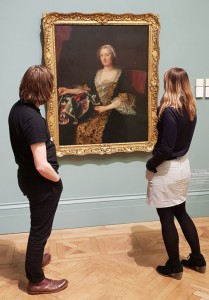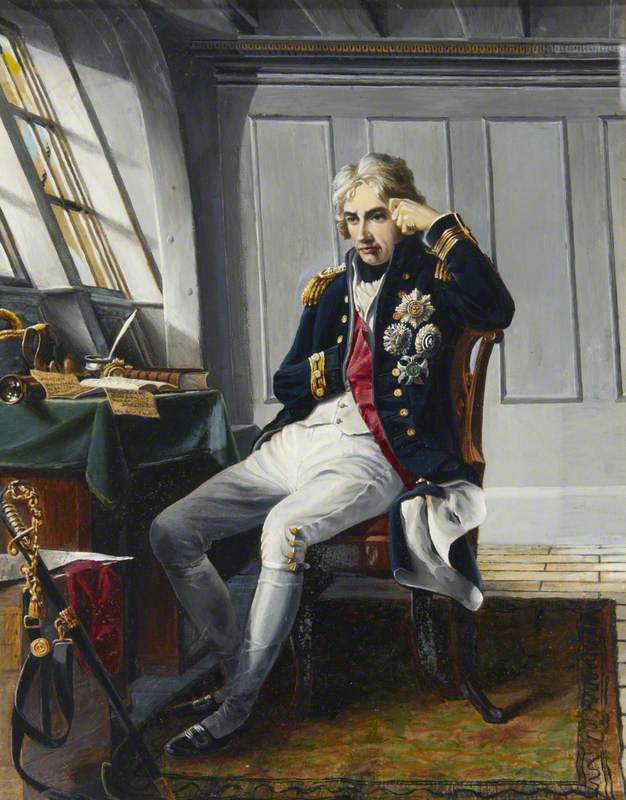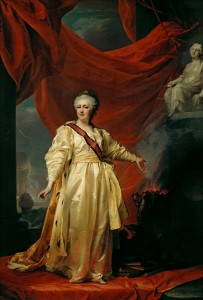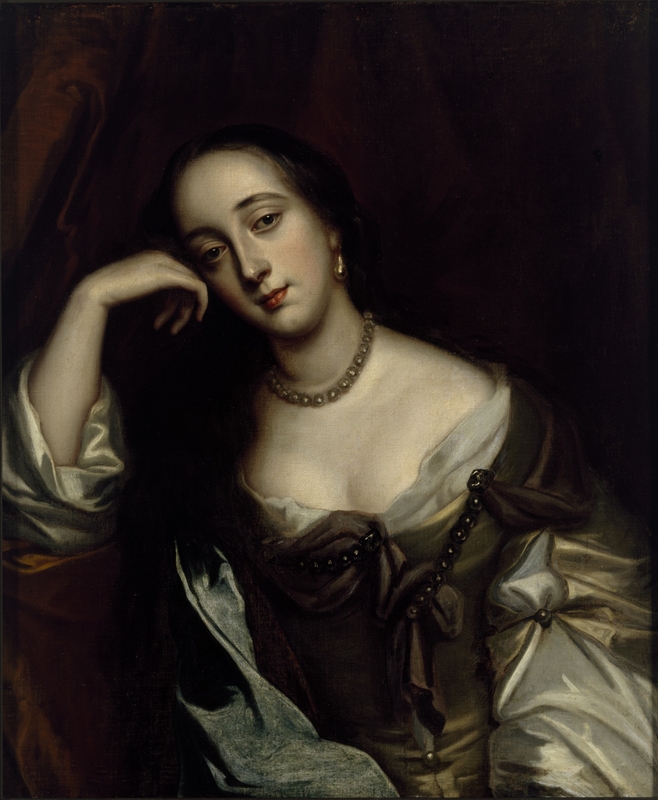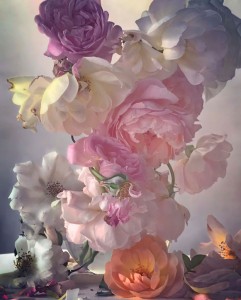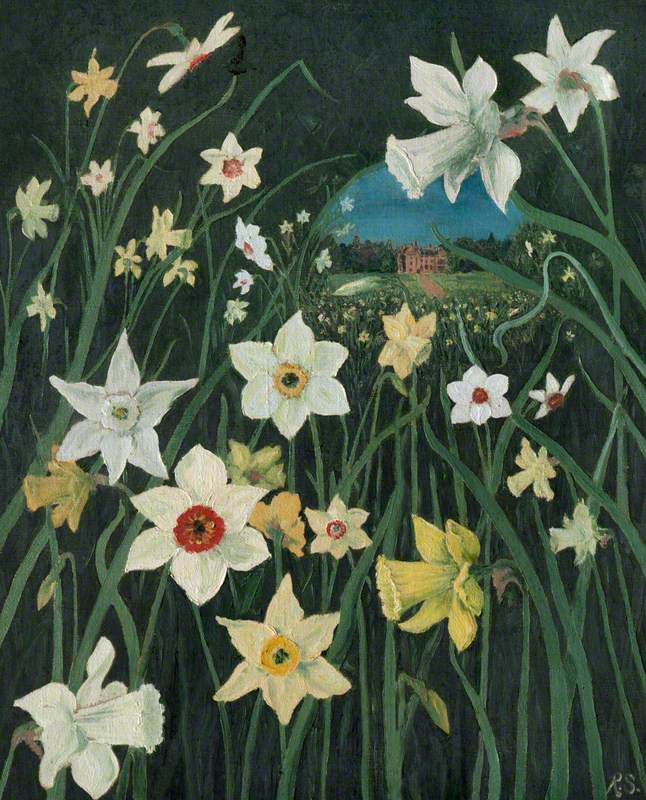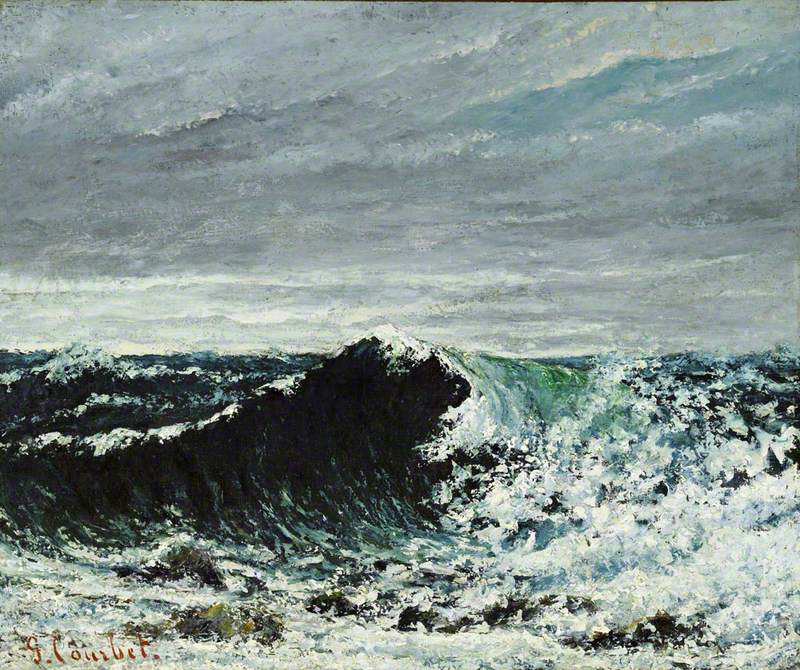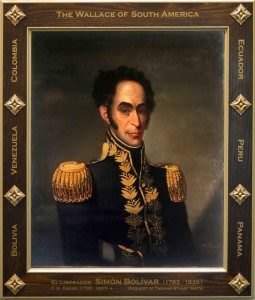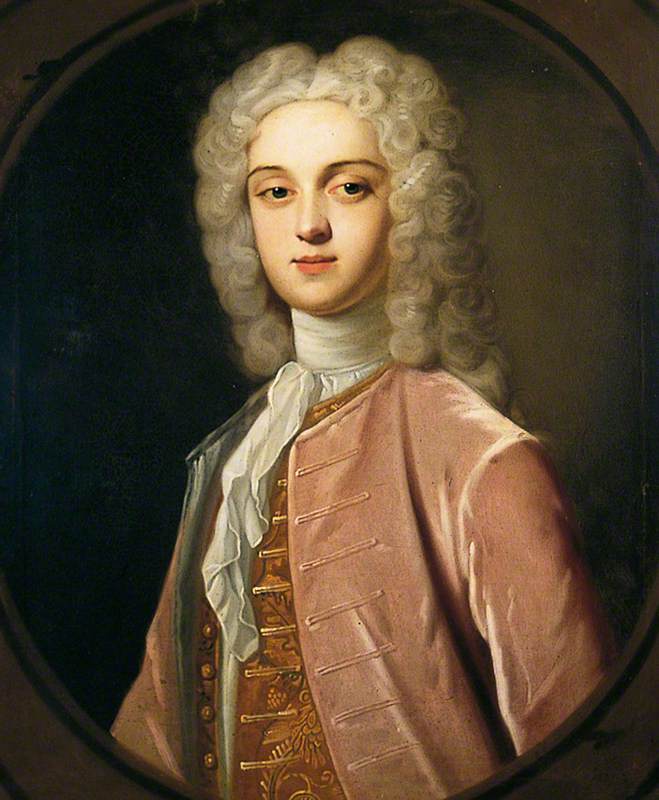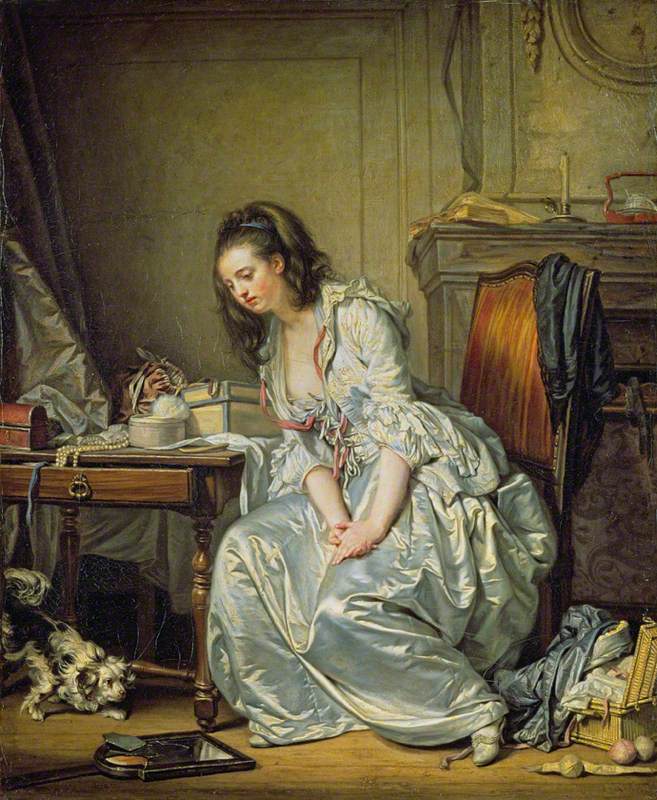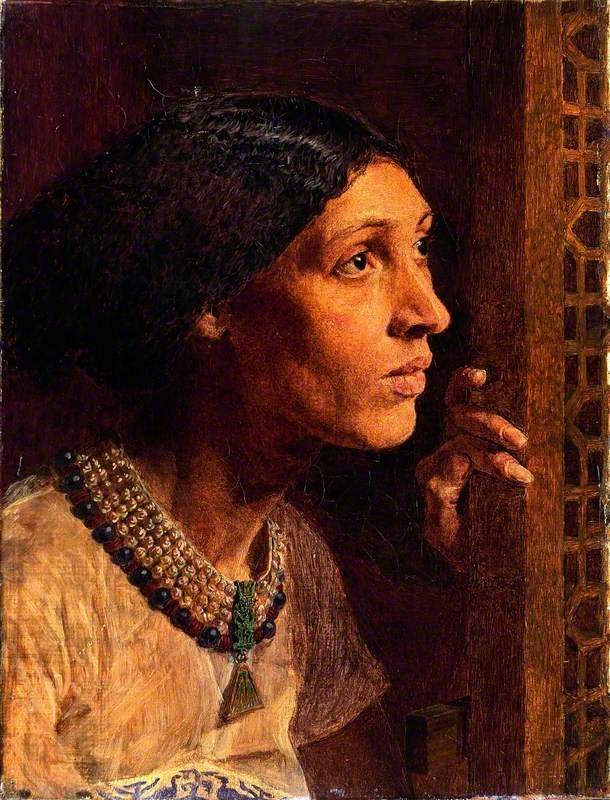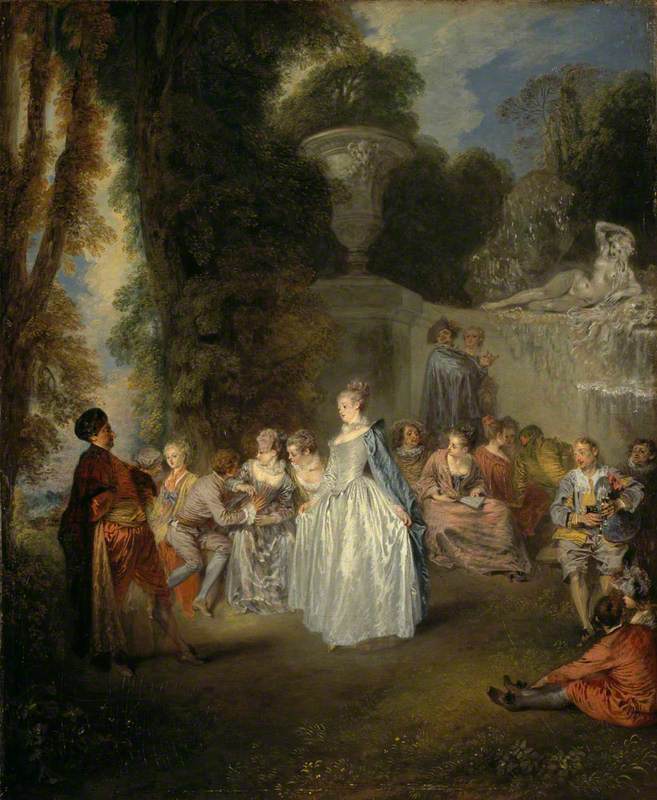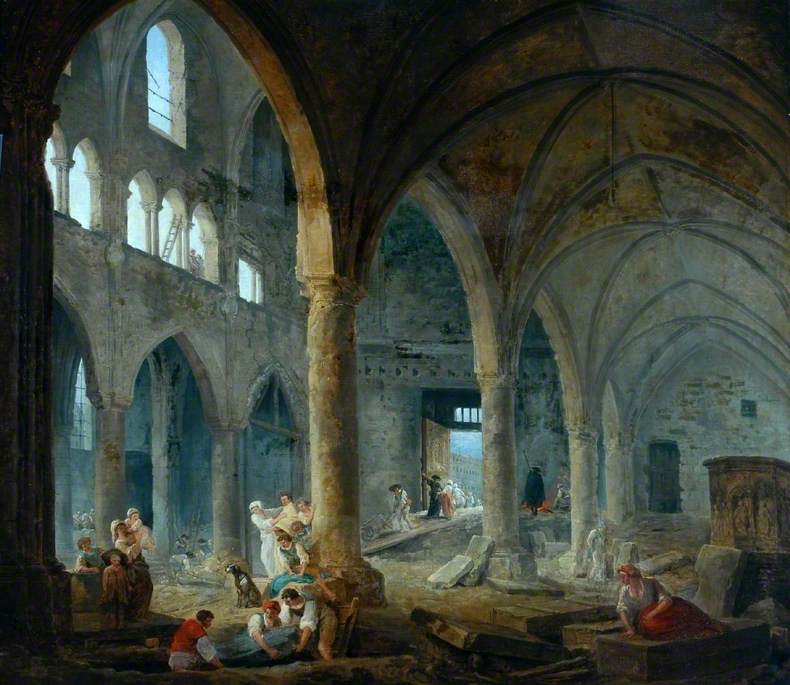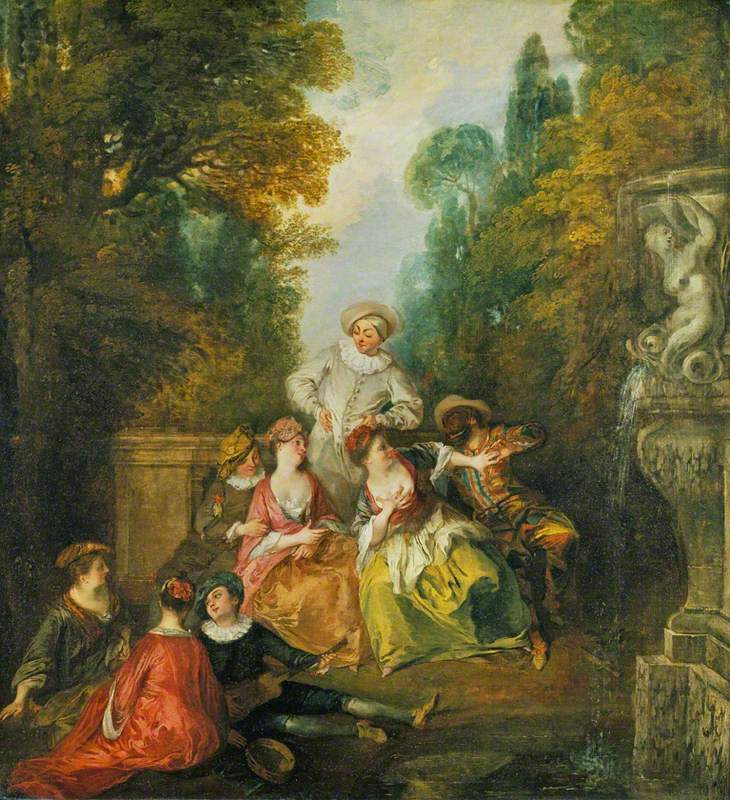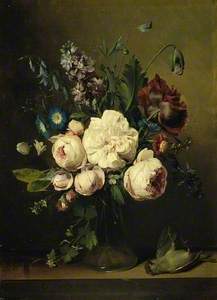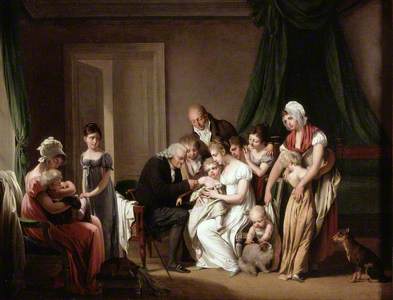Louis-Léopold Boilly (1761–1845) was 38 years old when he exhibited the first, now lost, version of A Girl at a Window at the 1799 Salon. We know from a near-contemporary description that it was painted in colour.
The version of the picture in The National Gallery is Boilly's grisaille replica of his own composition, probably painted within a few years after the original. By the time it was painted, Boilly was less than halfway through his career, but he had already enjoyed an eventful life.
Arriving in Paris from Arras in Northern France by 1785, he first mainly exploited a taste for small, meticulously finished and often-risqué boudoir paintings, as in Comparing Little Feet of 1791, in which as one woman offers a glimpse of a thigh, her friend offers a glimpse of a breast.
Comparing Little Feet
c.1791, oil on canvas by Louis-Léopold Boilly (1761–1845), The Ramsbury Manor Foundation 
Prints published after such paintings further exploited this taste to the extent that during a radical phase of the French Revolution in 1794 Boilly was denounced for offending public morals, a charge he managed to wriggle out of with an apology and the claim that it was not he who had ever chosen the prints' suggestive titles.
It was during the following politically calmer years that Boilly painted some of his few flower paintings and also turned towards genre scenes with more conventionally respectable themes.
Some of these, such as vaccination against smallpox, had particularly contemporary relevance. The procedure was then being vigorously encouraged by the Napoleonic government.
A Girl at a Window also contains references to contemporary reality, albeit in a less obvious way. Its composition with a figure projecting through a fictive open window space and its highly finished execution look back to the kind of Dutch seventeenth-century paintings often sought by French collectors at the time.
However, the inclusion in the painting of two telescopes, the spyglass held by the young woman and the goldfish bowl evidence Boilly's fascination with optics – he painted a number of trompe-l'oeil pictures and various optical instruments were recorded in family inventories. Their inclusion also reference a wider public's fascination with astronomy in which women played a role. In 1780s Paris one Madame du Piery, for example, gave astronomy lessons to women, and Marie-Jeanne de Lalande, niece-in-law of the eminent astronomer, Jérôme Lefrançois de Lalande, catalogued and published several thousand stars. Consequently, the concept of a female astronomer was not fanciful even if Boilly's depiction of the one in this painting was.
Although The National Gallery painting was made in imitation of a mounted print, Boilly did not include, as he did in pictures that can properly be called trompe-l'oeil, a fictive curling or creasing of the corner of the 'paper', nor supposedly broken glass over it. Although trick paintings of this kind were not invented by Boilly, he seems to have been the first to use the term trompe-l'oeil when he exhibited such a picture at the 1800 Salon.
An especially challenging example is his Christ on the Cross (1812, private collection) showing an apparently sculpted ivory figure of Jesus on a wooden cross.
Trompe l'œil of a Crucifix in Ivory and Wood
1812, oil on canvas by Louis-Léopold Boilly (1761–1845) 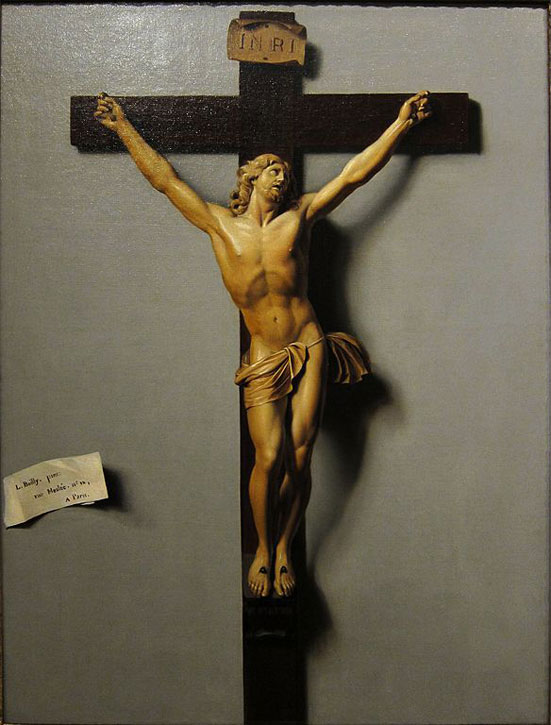
It not only questioned the nature of religious belief – the object offered for veneration is not what it appears to be – but the painting incorporated an advertisement for Boilly himself in the form of an 'attached piece of paper' on which he wrote his name and address. Coincidentally or not, at the time Boilly exhibited it at the 1812 Salon, the Pope was under arrest at Fontainebleau.
Boilly often looked at the world with a humorous eye including in his street scenes in which the caricatural nature of even the angry or rapacious made them more theatrical than real. His humour and his gift for caricature were most consistently evident in the series of 95 lithographs of Les Grimaces published in the years 1823–1828. Many of these were also published in England more or less contemporaneously.
The Grimaces
1823, lithograph by Louis-Léopold Boilly (1761–1845) 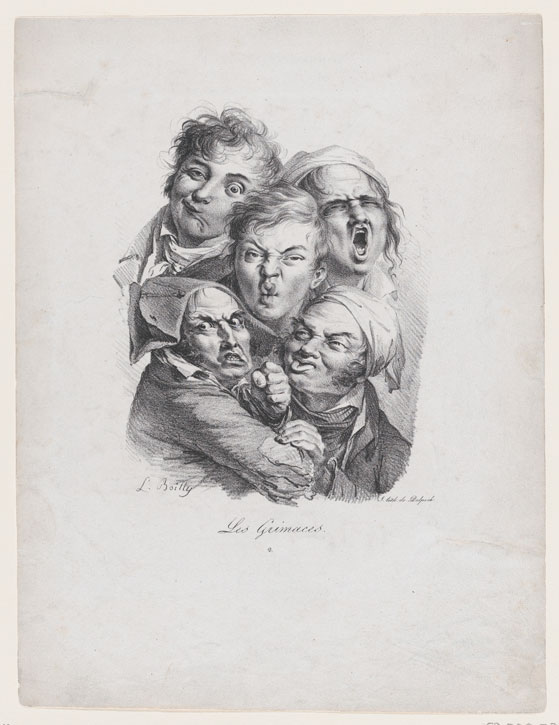
Where he departed from caricature, however, was in his production of small format head-and-shoulders portraits all of uniform size (21 x 17 cm approx.) in standardised frames each of which he was able to dash off in half a day. Nearly 800 are known of the 4,500 or so which his son Jules claimed his father had made.
Nevertheless, for all his commercial success none of Boilly's works was acquired by any French museum until shortly after his death in 1845 when the Louvre bought The Arrival of a Passenger Coach in the Cour des Messageries.
Humphrey Wine, former Curator of French seventeenth- and eighteenth-century paintings at The National Gallery
